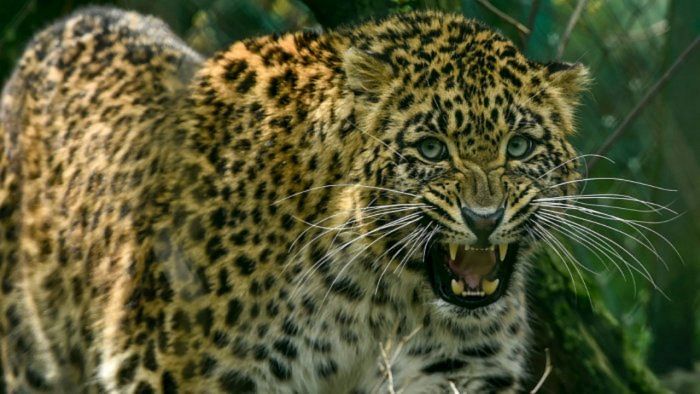
The increase in the leopards’ population in two of Jaipur’s forests, one of them the Jhalana leopard reserve, has given rise to frequent man-animal encounters in the urban areas.
The leopard count which stood at 12 in 2012 has increased to 40 in 2022, clocking an over 200 per cent growth in a decade. While the increase in population is good news for wildlife lovers, it has also raised concerns for people living nearby as the shy animal often ends up entering the city.
Experts insist that beefing up the prey base in the forests will help big cats keep to their natural habitats, as they often end up straying far too far away in their search for food or due to a shortage of space.
According to forest department officials, the Jhalana reserve has witnessed the highest growth in the population of leopards over the years because of the conservation works. The forest now has too many leopards.
"According to the latest count, there are 40 leopards in both Jhalana leopard conservation and Ambagarh leopard conservation in Jaipur," Janeshwar Chaudhary, a Ranger at Jhalana leopard conservation, said.
Ambagarh is the second leopard conservation in Jaipur to come up after Jhalana. Both combined are spread over 36 sq km and are separated by the Jaipur-Agra national highway.
Of the two, Jhalana with a 20 sq km area is the bigger and older leopard conservation where most of the 40 leopards live.
"The growth in the number of leopards in Jhalana is the highest in the state. It is mainly because of the protective environment and effective monitoring," Chaudhary told PTI.
He said that ideally, a 36 sq km area should have 10-12 leopards but there are 40 leopards, more than what the forest could provide for.
Chaudhary said that the forest is kept under watch round-the-clock through cameras which are monitored from a control room. The continuous surveillance, also the boundary wall around the reserve, has stopped illegal movement in the forest area.
The officer said because of the too little space, leopards have been witnessed to have moved out of the forest area into nearby urban areas, and at times becoming victims of road accidents.
There have been frequent incidents of leopards moving into the city areas during night hours, he said.
In some cases, leopards have been reported to have entered people’s houses, sending a panic wave among those people, even though they did not harm anyone, he said.
Wildlife Expert Dhiraj Kapoor, who has been working on several projects in Jhalana focused on habitat improvement, said that leopards are shy and if disturbed they are prone to stray outside their territory.
He said the efforts being made to increase the prey base are not enough.
"Given the thriving leopard population and the lack of sufficient pastures for herbivore prey, the overall prey base seems to be on the downward trend,” he said.
The forest department has also cleared nearly 100 hectares of area infested with the invasive Juliflora trees and developed grasslands to increase the spotted deer population.
Kapoor said that the number of healthy deer needs to be increased.
"In a forest such as Jhalana, located in the midst of an urban area, any disturbance to the wildlife will result in them moving out of their territory and closer to human habitation, which in turn could lead to human-animal conflict," Kapoor said.
He said that under Project Leopard launched in Jhalana in 2017 for leopard conservation, Jhalana was transformed from a nondescript piece of forestland into a leopard tourism reserve.
"Despite challenges that come from being located in an urban area, several positive initiatives have allowed the flora and fauna of this reserve to improve,” he said.
Kapoor said that the challenge of lack of secure connectivity to other forest pockets in the vicinity still needs to be addressed.
"Ambagarh forest is separated from Jhalana by a six-lane national highway, which is a death trap for migrating animals. Leopard fatalities due to road accidents have been reported. It's essential for a secure corridor to be established between these two forests to prevent such deaths,” he said.
Abhay Singh, a resident of Malviya Nagar, said: "It is good that the population is increasing in Jhalana forest but at the same time, the government has to ensure that it does not have a negative impact on residents. It causes huge panic when a leopard enters the residential areas."
Singh said that several incidents have happened in the area, including Malviya Nagar, where a leopard was spotted in the neighbourhood jumping from one house roof to the other, and sometimes entering a house, and sending a chill down people’s spines.
Jhalana extends across the southeastern part of Jaipur. The Aravali ranges run from north to south of the forest.
North of Jhalana is the Ambagarh Reserve Forest, which was inaugurated in May this year.
The western and southern boundaries of the Jhalana forest share heavily populated suburbs of Jaipur City, and the eastern boundary has villages and some new settlements.
Jaipur is the only city in the country with two leopard reserves. Leopard safari also takes place at both reserves.